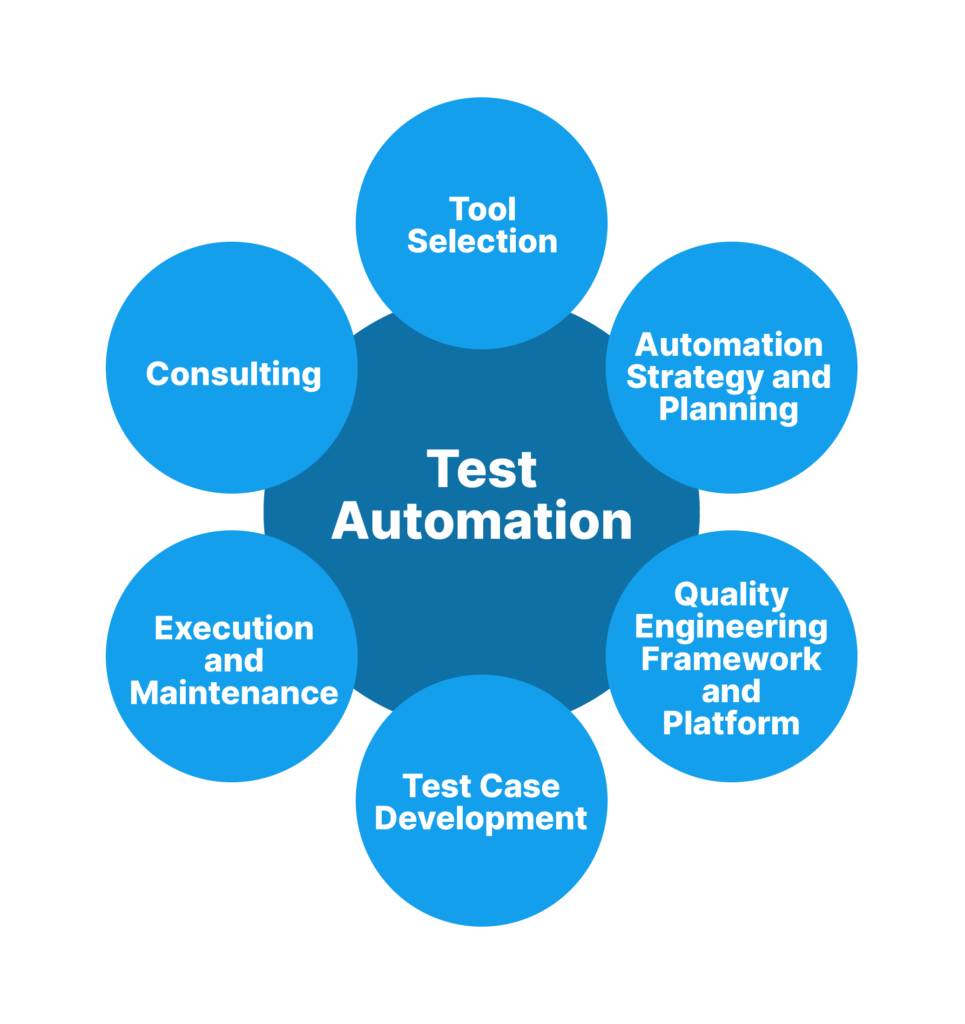In the dynamic world of product engineering, the demand for high-quality software solutions is paramount. With rapid product iterations and the expectation of seamless user experiences, software testing has evolved from being a final stage task to an integrated, continuous process. Test automation has emerged as the cornerstone of this transformation, allowing businesses to deliver robust products with efficiency, speed, and reliability.
For a product engineering company, embracing test automation is not just about keeping pace with technological advancements—it’s about ensuring the success of the product and its ecosystem. Let’s dive into the key reasons why test automation is vital and how it transforms the product development lifecycle.
What is Test Automation?
Test automation involves using automated tools and scripts to perform software testing tasks that were traditionally executed manually. These automated tests can validate if the product functions as expected, ensuring that new changes do not introduce errors, bugs, or regressions. From unit testing to system-level testing, automation enhances the speed and accuracy of testing, ultimately improving the overall product quality.

Why Test Automation is Crucial for Product Engineering Companies
1. Accelerates Time-to-Market
In today’s competitive landscape, speed is critical. With test automation, repetitive tasks such as regression testing, performance validation, and unit tests can be executed swiftly and accurately. This helps reduce the time spent in the testing phase and allows businesses to ship products faster without compromising on quality.
2. Enhances Product Quality and Reliability
Automated testing ensures that even the smallest changes in code are thoroughly tested across different scenarios. This consistency leads to higher product quality and better user experiences. The early detection of bugs, facilitated by automated testing, minimizes costly post-release fixes and ensures a stable, reliable product.
3. Supports Continuous Integration & Continuous Delivery (CI/CD)
Modern product engineering practices are heavily reliant on CI/CD pipelines to continuously deliver updates and features. Test automation is integral to this process, enabling seamless integration of new code and minimizing the risk of defects. Automated tests can run at each stage of the CI/CD pipeline, ensuring that new features do not disrupt existing functionality.
4. Scales Testing Efforts
For complex products, manual testing becomes inefficient and error-prone. Test automation allows for parallel execution of tests, significantly reducing the time needed to validate large codebases. Automated tests can also be easily scaled to cover a wide range of platforms, devices, and environments, ensuring comprehensive coverage.
5. Reduces Human Error
Manual testing is susceptible to human error, especially when repetitive tasks are involved. Automated tests, however, are consistent and reliable, executing the same operations accurately every time. This reduces the likelihood of oversights and increases confidence in the test results.
Key Test Automation Tools for Product Engineering
To implement a successful test automation strategy, choosing the right tools is critical. Here are some popular tools widely used in the industry:
- Selenium: A powerful framework for automating web applications, offering support for multiple browsers and platforms.
- JUnit/TestNG: Popular frameworks for unit testing in Java, providing extensive functionalities for creating and running automated tests.
- Jenkins: A CI/CD automation server that integrates with various testing tools to automate the software development lifecycle.
- Appium: A mobile testing framework that automates testing for native, mobile web, and hybrid applications across Android and iOS.
- Cucumber: Supports Behavior-Driven Development (BDD) by automating acceptance tests written in a natural language format.

Best Practices for Implementing Test Automation
To maximize the benefits of test automation, it’s essential to follow best practices:
- Start Small and Scale Gradually: Begin by automating critical test cases and expand the scope gradually as your team becomes familiar with the process.
- Prioritize Tests: Not every test needs to be automated. Prioritize repetitive, time-consuming, and high-impact tests that are most beneficial to automate.
- Maintain and Update Test Scripts: As the product evolves, so should the automated tests. Regularly review and update test scripts to ensure they remain relevant and effective.
- Integrate with CI/CD Pipelines: Ensure that your automated tests are part of the CI/CD pipeline to enable continuous testing.
- Leverage Data-Driven Testing: Create test cases that can be reused with different sets of data to increase test coverage without duplicating effort.
Challenges in Test Automation
While test automation offers numerous benefits, it’s not without its challenges:
- Initial Setup Costs: Implementing a test automation framework requires an upfront investment in tools, resources, and time.
- Maintenance: Automated tests require regular maintenance to keep up with product changes, which can be resource-intensive.
- Skill Gaps: Test automation demands specialized skills in scripting, coding, and tool usage, which may require training or hiring additional talent.
Despite these challenges, the long-term advantages of test automation far outweigh the initial hurdles, making it a crucial element in any product engineering company’s quality assurance strategy.
Conclusion
For product engineering companies, test automation is more than a technical tool—it’s a strategic enabler that drives product innovation, quality, and delivery speed. By embracing test automation, companies can unlock new levels of efficiency, ensuring that they consistently meet and exceed customer expectations in today’s fast-paced, technology-driven world.



No responses yet